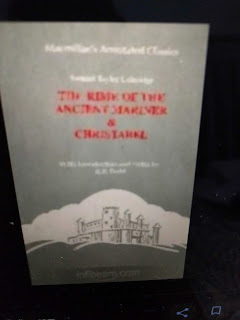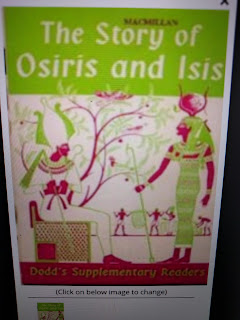My childhood days were of lower middle class urban life in Bangalore of the late 60s and 70s. The things at home, the activities and life style is so different from what it became in the 80s and onwards. So many things I took for granted disappeared completely and now I wish someone had had the foresight(and camera, money to afford the reels and so on) to photograph those things which have disappeared from our lives forever. Below is a list of such things. I have written them in no order..I have written them in the order the things came to my memory.
Somethings are listed in the order of chronology: as the transition took place with the new one replacing the old one. For example we had a wood burning stove at first which was replaced by kerosene stove and this was replaced by electric coil stove and this was replaced by gas stove.
At home:
Kitchen
We transitioned from Woodburning stove to kerosene stove (not pumping type). From kerosene stove (pumping type) to electric stove. Last and present is the gas stove. We do have an electrical one for emergency when we run out of gas.
In my husband's home, his grandmother used only coal burning 'Agastige' until her death in the 90s; she refused to cook on electric or gas as she thought that cooking on coal was 'pure' while using any other fire was impure!
1st one: Stone mortar and pestle on the floor in which one could grind by sitting on the floor. Then we transitioned to the 2nd.
2nd: Stone mortar and pestle set in a 3 or 4 foot pillar of concrete in which one could grind chutney, etc while standing
3rd: The wet grinder running on electricity bought from Vellore; this is basically a steel mortar with a stone pestle inside attached to a chain and the pestle runs on electricity
4th: modern electric mixer and grinder.
In the 70s and maybe 60s, my dad bought raw coffee seeds in Majestic on Kempegowda road from a coffee depot in the 70s. My grandmother would roast those seeds and then the seeds were ground daily to make coffee. The next stage was buying 'Cothas coffee powder" (Majestic, near chickpet) as the roasting was a long slow delicate process and the coffee would not taste good if the seeds were overdone or underdone. Now Cothas has been replaced by Bru instant coffee powder. Hasslefree and less work and coffee tastes great everytime. Not hit and miss like when we were roasting coffee beans ourselves or making coffee with Cothas
Mud pots hanging from kitchen ceiling holding butter floating in water//aluminium wire basket suspended from kitchen ceiling holding onions, garlic and potatoes.
Earthen pot to store water in summer as the water was cooler in earthern pot//replaced by fridge.
The copper and brass vessals,aluminium and hindalium vessels, steel vessals, the thick aluminium ladle broken with use// the aluminium spoons, aluminium measuring cans of litre, 500 ml, 250, 200, 100 and 50 ml cans//'chambu' made of copper, silver, brass, steel and plastic.
Bathroom:
The coal and wood burning stove built of concrete in bathroom with a huge brass 'ande'(pot) over it to boil water for bath;, the immersion coil in the iron and later plastic bucket to heat water for bath, the brass boiler with electric coil inside to heat water, the iron and plastic and steel buckets, the copper,brass, steel and plastic 'bindiges' or pots.
Storeroom:
The gunny sacks in the store room, the floor to ceiling mud and papier-mâché container in village homes holding grains.
Hall or living room:
Radio//transistor//black and white TV//colour TV//TV with knobs to change and without remote control//
Swing made of coconut coir rope and with a small cotton pillow on top//swing with small wood seat and large wood seat
Porcelain dolls of animals, gods and goddesses, in showcase.
Study room:
Typewriter//old paperwork and notes at home//wooden book holder to keep heavy books and read when sitting on the floor for my grandmother .
Ink pens and bottles of ink no longer seen around now.
Aluminium boxes to carry books to school, khaki color school bags, range of tiffen boxes to take lunch to school in steel, aluminium and plastic.
will continue this list
Books with old type illustrations on cover which you don't get now...example a Wodehouse book had a fantastic cover with a cartoon; now you get the same novel with another cartoon on cover but the modern cartoon is not to my liking.
Old Readers Digest books with amazing covers and illustrations and cartoons inside too.
Books from the communist Soviet Union
Enid Blyton, Nancy Drew books with amazing illustrations on cover and inside.
Calenders of those days with Kitschy Gods and Godesses; sceneries, paintings. I loved one which had paintings of twelve love stories of India for the twelve months such as Prithviraj Chauhan and his lover; Shakuntala and Dushyanta, etc.
Bedrooms:
Iron box with mica inside which broke down frequently//
Old silk saris//Binny mills clothes and fabrics//NTC fabrics//
My long skirts called as Langas which had wonderfully colourful and large floral prints. Now few girls uses Langas and Langa Davanis.. Almost all girls now wear the north Indian salwar kameez or churidar or western frocks, skirts and jeans and shorts.
Rusty iron trunks( now replaced by suitcases); 'Hold-all' used to travel (and now replaced by ?backpacks, suitcases, etc.)
Heavy iron lockers about 3 feet by two feet with a metal 'hand holding a roll of paper' to turn it open called Lakshmi lockers in which valuable documents, jewels and money were kept;
ancient huge padlocks with a variety of keys.
A doctor's bag in my house made of maroon hard leather with golden color handles and cute looking. Doctors carried it with them all the time and probably visited patients at home in those days.
Now we have diesel run generators when there is no electricity. In the 70s, we used to light mud lamps called Deepas which had hand-rolled cotton wicks and cooking oil when there was no electricity. We also used white candles. In villages, where cooking oil is expensive, people used inedible oil from a seed called Honge beeja(Honge mara i.e. the tree called Millettia pinnata)
We use electric torch these days when we step out in the dark when there is no electricity but in those days we used kerosine lit 'hurricane' lamp.
Cowdung smeared and hardened earth in front of home if the front was muddy and not covered with granite slabs. Rangolis covering the earth in front of the door.
I travelled to my village from the taluk by bullock cart which had large wooden wheels and pulled by two bullocks. Now I travel by car, bus or walk. Bullock carts still exist in my village but getting replaced by tractors and other vehicles. Bullock carts were used to transport both people and food grains. transport people from villages to other villages and food grains from fields to homes or homes to taluks for selling.
It would have been wonderful if I could have photographed and videotaped the things of old in my village! Both the old and the new coexist today in my village and can still be photographed and recorded. But some things are permanently missing. More of that when I have time to add to this
...........
Things of village life I wish I had captured on photo or video:
I visited my village often in my childhood but after I started college my visits reduced a lot. My memory of my trips to village are pretty shaky but I am going to jot down all that I can recall here...before my memories are further erased by time!
I wish I had a video of the tiled roof of house in my village and the one square of space made by removing a tile in the kitchen's roof to let in the sunlight. I loved watching the sunlight stream like a pole through the gap in the roof . I would watch the dust particles swirling in the 'pole' of sunlight and the dust outside the 'pole of streaming sunlight' was invisible! I would be seated on the floor eating whatever was given such as ragi roti made on the wood-burning stove on the floor and butter while watching the dust in the sunlight.
I would have loved to have photograph the silver coins in the Iron chests in the houses in the villages. Also the rolled documents of land, court documents and money.
The sparseness, neatness and economy of the village homes of those days was amazing. I don't think there was the slightest bit of clutter in the houses as no one had money to buy things which they din't use or used sparingly. Homes were small and space was needed to store food grains after harvest too. The space immediately after entering a home was meant for the family's cattle and so the homes had the smells of dung, cattle urine, grass and so on. Thanks to the cattle, we had to endure the bites of terrible mosquitos called 'danada-solle'.
In the 80s, I think, farmers in villages of Tumkur started rearing silk worms as they could earn more selling silk cocoons than selling rice, ragi or peanuts they grew. The space in the homes were then used to erect the large silk-worm-rearing basket-mat sort of things made of a bamboo like reed. The silk-worm rearing process in my village is another thing worth videotaping.
Village kitchens:
The mortar and pestle in villages were not the chiselled ones seen in city homes. In cities the mortar was a hollowed out part of a square block of granite and the pestle was placed in the hole and rotated by hand. In my village, the pestle was usually a large round granite rock rolled on a slab of granite. The slab of granite served as the mortar. One needed both hands to roll the rock back and forth. The items to be grounded such as fresh coconut pieces were placed on the slab of granite and the rock was rolled back and forth on the granite. It was difficult for me to grind things in this manner!
Vanake a thick stick of about three feet length was another instrument used by women to pulp various grains and pulses. The grains were put into a mortar made of granite and placed on the floor. The women would be standing as they pounded the grain in the mortar with the 'vanake'.
The 'beeso-kallu' was used to grind rice into flour by village women at home, before the electric flour mills came. The beeso kallu consisted of twin round granite slabs one on top of the other. There was a hole in the top granite slab through which a stick was inserted. The women rotated the granite slab holding the stick and rice or ragi or whatever was poured into a hole at the top of the granite slab and the rice was ground between the rotating slab and top and the bottom granite slab.
Village homes had more of aluminium and copper and mud pots while city homes had more of stainless steel vessels. The number of utensils in cities were a lot more than in the villages. The number of spices and dhals used were a lot less in villages. Plates were made of brass and were heavy in the villages.
Both the men and women in my caste in villages and maybe the entire village put both vibuti and kumkuma on their forehead daily morning after their prayers. I am not sure if they still do it now.

































































